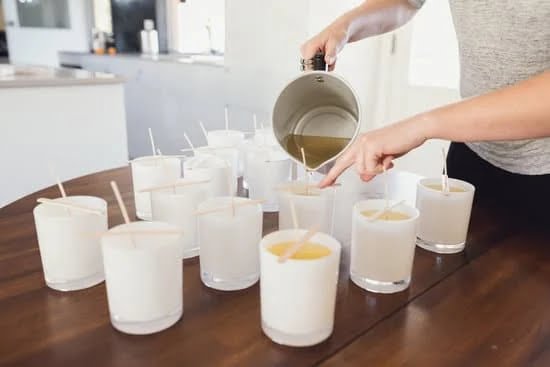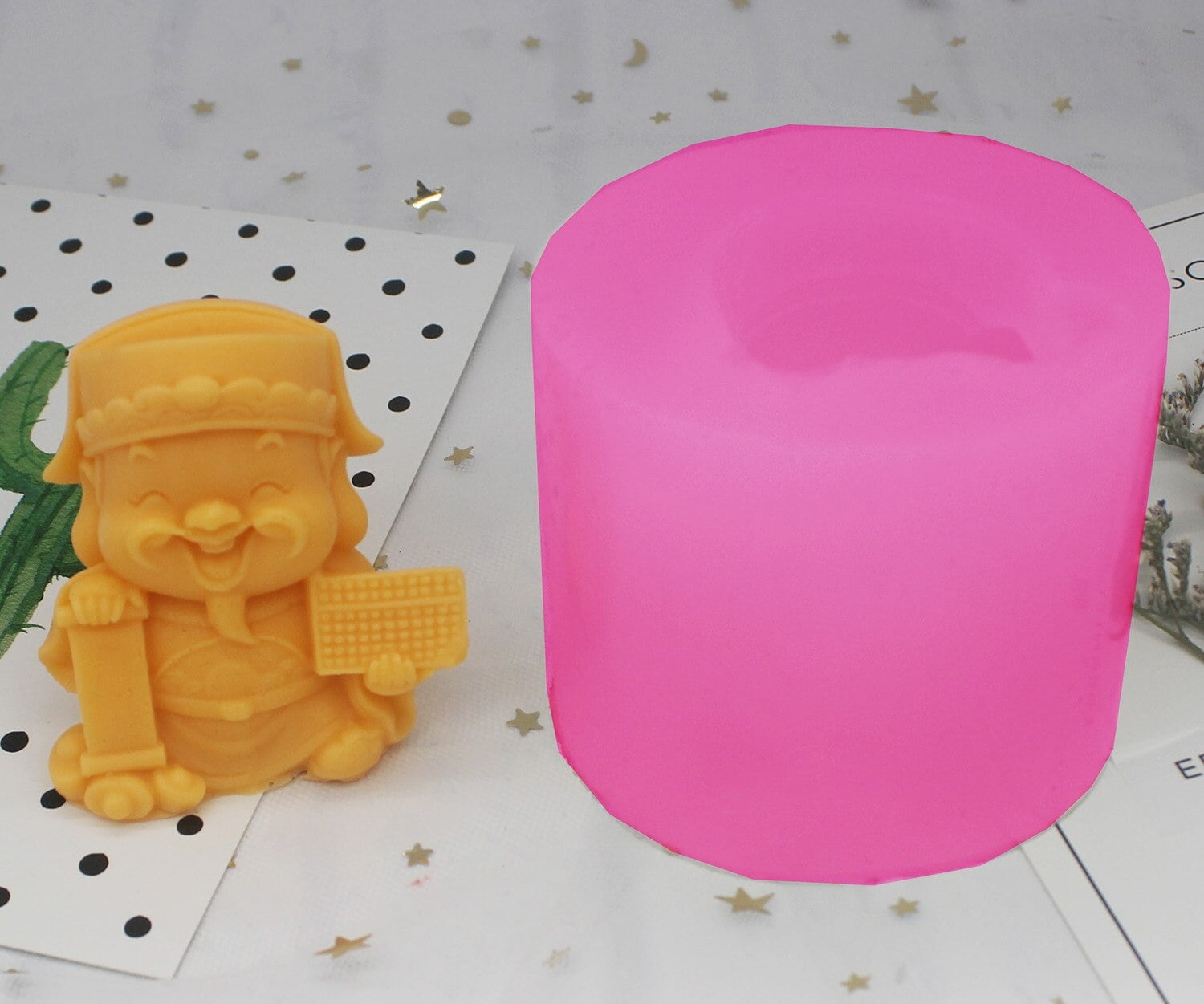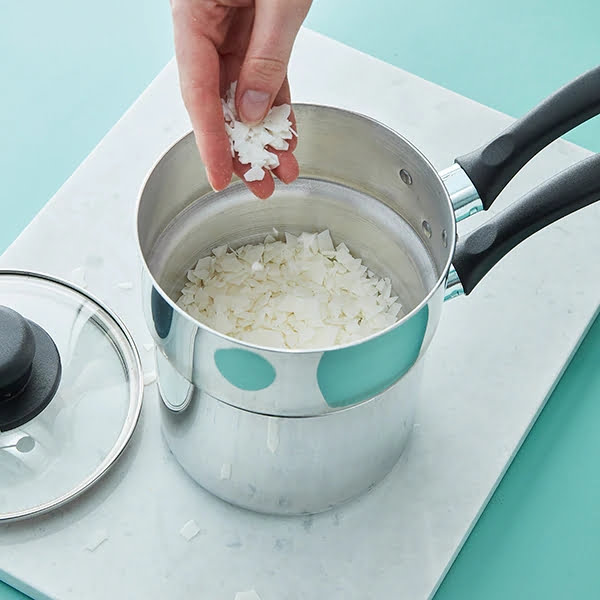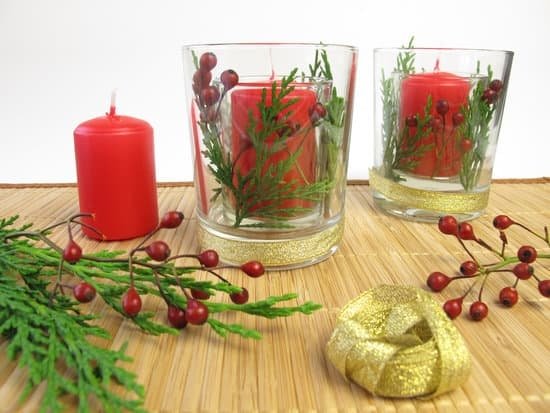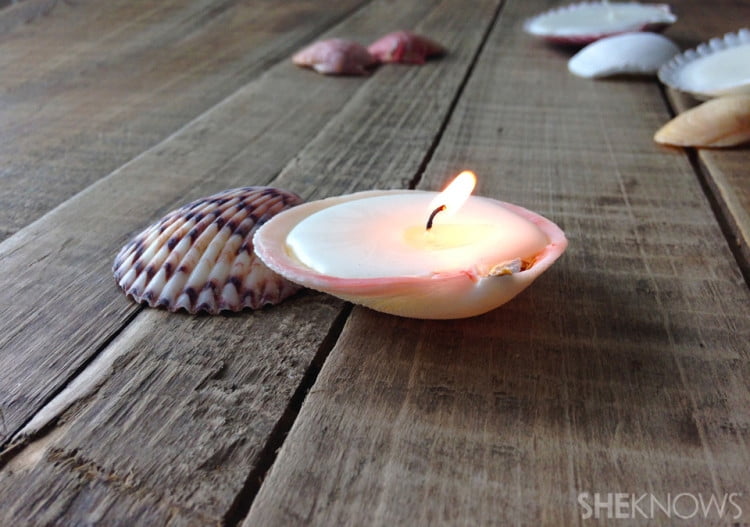Candle Making Oil Fragrance has always played a significant role in the art of candle making, adding not only a pleasing aroma but also enhancing the overall ambiance of any space. Whether you’re a seasoned candle maker or a beginner taking your first steps into this craft, understanding the importance of fragrance oils is essential to create truly captivating candles.
In this article, we will explore the various aspects of candle making oil fragrance, from its historical significance to the science behind different oils and how they interact with flames.
Candle making itself has a rich history that dates back thousands of years, and scented candles have always been highly sought after. Fragrances add an extra layer of allure to candles, creating an atmosphere that can evoke warmth, relaxation, or even invigoration depending on the scent used. To fully appreciate the importance of fragrance oils in candle making, it’s important to understand their origins and how they have evolved throughout history.
As you delve deeper into the world of candle making, you’ll discover a wide range of options when it comes to fragrance oils. From floral and fruity scents to woody or spicy aromas, there is something for every preference. We will explore the different types available and discuss factors that should be considered when choosing which fragrance oil is best for your candles.
In the following sections of this article, we will take a closer look at the science behind candle making oil fragrance. You’ll learn how different oils interact with flames and why certain combinations create more efficient and longer-lasting scents. Safety precautions should also be considered when working with these oils, ensuring a harm-free experience for both makers and users alike.
So whether you’re looking to create handmade gifts for loved ones or trying to establish your own candle-making business, understanding and utilizing candle making oil fragrances is crucial for success. Join us as we explore this fascinating world and unleash your creativity in crafting delightful scents that will bring joy and warmth to any setting.
A Brief History of Candle Making
The Origins of Candle Making
Candle making is an ancient art that dates back thousands of years. The earliest evidence of candles can be traced back to ancient Egypt, where they were made from animal fat and used for ceremonial and practical purposes. Over time, the process of candle making evolved, with different civilizations experimenting with various materials and techniques.
The Role of Fragrance in Candle Making
Fragrance has always played a significant role in the history of candle making. In ancient times, candles were often scented using natural ingredients such as herbs, flowers, and essential oils. These fragrant candles were not only used for their illuminating properties but also for their ability to create a pleasant aroma in homes and sacred spaces.
During the Middle Ages, candle makers began to use fragrances derived from spices and botanicals to enhance the sensory experience of burning candles. The scent of these candles was believed to have both spiritual and therapeutic qualities, promoting relaxation, tranquility, and even warding off evil spirits.
In modern times, fragrance oils have become a popular choice for adding scents to candles. These oils are specifically formulated to disperse fragrance evenly when burned, creating a long-lasting aroma that fills the room. Whether it’s a soothing lavender scent for relaxation or a festive cinnamon fragrance for holiday celebrations, the role of fragrance in candle making continues to evolve and captivate our senses.
Types of Fragrance Oils for Candle Making
When it comes to candle making, the fragrance is an essential element that can elevate the experience and create a delightful ambiance. There are various types of fragrance oils available in the market, each offering its unique scent and characteristics. Exploring these options can help candle makers achieve their desired aroma and create candles that captivate the senses.
One popular type of fragrance oil for candle making is essential oils. Derived from plants, essential oils offer natural scents that can be both uplifting and calming. With a wide range of options such as lavender, citrus, eucalyptus, and more, candle makers have the freedom to experiment with different combinations and create signature scents for their candles.
Another common type of fragrance oil used in candle making is synthetic or fragrance-grade oils. These oils are created in a laboratory to mimic various scents found in nature or to create unique fragrances that do not exist naturally. They offer a consistent scent profile and often have a stronger throw when compared to essential oils. Synthetic fragrance oils also provide a broader range of options in terms of scent combinations and complexity.
In addition to essential oils and synthetic fragrance oils, there are also blended fragrance oils available for candle making. These blends combine multiple scents together, resulting in complex aromas that cannot be achieved with single-note fragrances alone. Blends can include both natural and synthetic components, giving candle makers even more versatility in creating custom scents.
Exploring the wide range of fragrance oil options is an exciting part of the candle making process. Whether using essential oils, synthetic fragrance oils, or blended fragrances, each choice brings its own character to the final product. By experimenting with different combinations and understanding how each type interacts with other ingredients in the wax, candle makers can truly personalize their creations and delight customers with captivating scents.
The Science Behind Candle Making Oil Fragrance
One of the key elements in candle making is the fragrance oil, which adds a delightful scent to the candles when they are lit. But have you ever wondered how these fragrance oils interact with flames? In this section, we will explore the science behind candle making oil fragrance and understand how different oils behave when exposed to fire.
When a candle is lit, the heat of the flame causes the solid wax to melt and become liquid. This liquid wax is then drawn up the wick through capillary action. As it reaches the top of the wick, it vaporizes and combines with oxygen from the air, creating a combustion process that sustains the flame.
The fragrance oil in scented candles plays an important role in this process. Different oils have different chemical compositions, which can affect their interaction with flames. For example, some oils contain volatile organic compounds (VOCs) that evaporate easily and contribute to a stronger scent release when burning. Other oils may have higher flashpoints, meaning they require more heat to ignite and release their fragrance into the air.
It’s important for candle makers to choose fragrance oils that are specifically formulated for use in candles. These oils are typically designed to be safe for burning and produce minimal soot or smoke during combustion. Additionally, reputable suppliers often provide information about each oil’s behavior when burned, including any safety precautions or recommended usage rates.
Understanding how different oils interact with flames can help candle makers create candles that not only smell amazing but also burn cleanly and evenly. By carefully selecting fragrance oils based on their chemical composition and understanding their impact on combustion, candle makers can ensure that their creations not only provide a beautiful aroma but also maintain high quality throughout their burn time.
Top Tips for Choosing the Right Candle Making Oil Fragrance
Understanding the Importance of Fragrance in Candle Making
When it comes to candle making, choosing the right fragrance oil is key to creating a delightful experience for yourself and others. The scent of a candle can evoke various emotions, enhance ambiance, and even help relax or uplift moods. With countless options available, it can be overwhelming to decide which fragrance oil is best for your candles. In this section, we will explore some top tips for choosing the right candle making oil fragrance by considering important factors.
Consider the Purpose and Setting
One of the first factors to consider when choosing a candle making oil fragrance is the purpose and setting in which you plan to use the candles. Are you making candles for relaxation and self-care? Or perhaps you are creating candles as gifts for special occasions?
Understanding the purpose will help guide you in selecting scents that align with the intended atmosphere. For example, lavender or chamomile fragrances are popular choices for relaxation candles, while floral scents like rose or jasmine may be ideal for romantic or special occasion candles.
Additionally, consider the setting in which your candles will be used. Is it a small enclosed space where a strong scent might be overpowering? Or is it a larger room that requires a more potent fragrance to fill the space?
Keep in mind that different oils have varying scent strengths. Some oils may have a more subtle aroma, while others can be quite strong. It’s essential to strike a balance so that you achieve a pleasant aroma without overwhelming your senses or those around you.
Blend Compatibility and Longevity
Another important tip when choosing candle making oil fragrance is evaluating blend compatibility and longevity. Different oils can vary in how well they mix with other oils when creating unique blends. It’s crucial to research and experiment with blending fragrances to find combinations that work harmoniously together.
Additionally, consider the longevity of the fragrance. Some oils have a stronger and longer-lasting scent compared to others. If you desire a candle with a fragrance that lingers in the air even after it’s blown out, opt for oils known for their excellent scent throw. On the other hand, if you prefer a more subtle aroma, choose oils that are known for their gentle fragrance release.
By considering the purpose and setting, as well as blend compatibility and longevity, you can confidently select the right candle making oil fragrance that will enhance your candles and create an inviting atmosphere for yourself and others to enjoy.
DIY Candle Making Recipes
Candle making is not only a practical skill but also an opportunity for creativity and self-expression. One of the most exciting aspects of candle making is adding fragrance to create delightful scents that can enhance any space. In this section, we will explore step-by-step instructions for creating your own custom scents in DIY candle making recipes.
Before we dive into the recipes, it is important to note that safety should always be a priority when working with candle making oil fragrances. Ensure you are working in a well-ventilated area and follow all safety precautions outlined by the fragrance oil manufacturer. Additionally, consider conducting small test batches before committing to large quantities of ingredients.
One popular recipe for candle making is the soy wax candle with lavender and vanilla fragrance. To create this scent, start by melting soy wax flakes in a double boiler. Once melted, remove from heat and add a few drops of lavender essential oil and vanilla fragrance oil. Stir gently until well combined, then pour the mixture into prepped containers with pre-tabbed wicks. Allow the candles to cool and set fully before enjoying their calming aroma.
Another favorite among candle makers is the citrus twist candle. For this recipe, you will need soy wax flakes again as the base. Melt the wax in a double boiler and add a few drops each of orange, lemon, and grapefruit essential oils for a refreshing scent combination. Stir thoroughly and pour into containers with wicks. Let them cool completely before trimming the wick and lighting.
Experimenting with different fragrance combinations can lead to unique results, so don’t be afraid to get creative. Whether you prefer floral or fruity scents or want to explore more exotic aromas like sandalwood or patchouli, there are endless possibilities for creating delightful scents in your DIY candle making endeavors.
| Recipe | Fragrance Combination |
|---|---|
| Soy Wax Lavender and Vanilla Candle | Lavender essential oil + Vanilla fragrance oil |
| Soy Wax Citrus Twist Candle | Orange essential oil + Lemon essential oil + Grapefruit essential oil |
Creative Ways to Use Candle Making Oil Fragrance
Candles are not the only way to enjoy the delightful scents of candle making oil fragrances. In fact, there are several creative ways to use these aromatic oils to enhance ambiance in various settings. Whether you’re looking to freshen up a room or create a relaxing atmosphere, here are some innovative ideas for using candle making oil fragrances beyond candles:
- Reed Diffusers: One popular alternative to candles is a reed diffuser. These simple yet elegant devices consist of rattan reeds inserted into a glass bottle filled with fragrance oil. The reeds act as natural wicks, drawing up the oil and dispersing its scent into the surrounding air.
To make your own reed diffuser, simply pour your chosen fragrance oil into a glass bottle and insert 4-5 reeds. Flip the reeds every few days to refresh the scent. - Potpourri: Another creative way to use candle making oil fragrances is by infusing them into potpourri mixes. Potpourri is a combination of dried flowers, herbs, and other botanicals that emit a pleasant aroma when placed in a bowl or sachet. To incorporate fragrance oils into potpourri, lightly spritz it with your desired fragrance oil and allow it to dry completely before displaying it in your home.
- Linen Spray: Give your bed sheets, towels, or clothes a burst of fragrance by creating an easy DIY linen spray. Mix together equal parts water and fragrance oil in a spray bottle, then shake well before each use. Spray this fragrant mist onto your linens or fabrics for an instant refresh between washes.
- Homemade Air Fresheners: Instead of using store-bought air fresheners that may contain harmful chemicals, consider making your own all-natural alternatives using candle making oil fragrances. Mix together baking soda and a few drops of fragrance oil until well combined, then spoon this mixture into small fabric sachets or open containers. Place these homemade air fresheners in closets, drawers, or any areas that could benefit from a fragrant boost.
- Scented Candles and Wax Melts: While this may seem counterintuitive to the section title, utilizing candle making oil fragrances in scented candles and wax melts allows you to enjoy the captivating scents of your favorite fragrance oils in a different form. These products offer an easy and convenient way to add fragrance to any space without the need for an open flame.
By exploring these creative ways to use candle making oil fragrances, you can infuse delightful scents into your surroundings beyond traditional candles. From reed diffusers to linen sprays, there are endless possibilities to enhance ambiance and create a welcoming atmosphere using these aromatic oils. Get creative and experiment with different combinations of fragrance oils until you find your perfect scent for any occasion or setting.
The Environmental Impact of Candle Making Oil Fragrance
Candle making can be a relaxing and enjoyable hobby, but it’s important to consider the environmental impact of the materials we use. One aspect to pay attention to is the choice of candle making oil fragrance. Traditional fragrance oils often contain synthetic chemicals that may have negative effects on both our health and the environment. Fortunately, there are sustainable alternatives available that can help minimize this impact.
One sustainable option to consider is using essential oils instead of synthetic fragrance oils. Essential oils are derived from plants and offer a natural and eco-friendly alternative for scenting your candles. They are typically extracted through steam distillation or cold pressing methods, which preserve the beneficial properties of the plants. Additionally, essential oils come in a wide variety of scents, allowing you to create unique and personalized fragrances for your candles.
When using essential oils for candle making, it’s important to note that they have different potency levels compared to fragrance oils. Some essential oils may evaporate or dissipate faster when exposed to high temperatures, so you may need to increase the concentration or add them at different stages during the candle-making process to achieve your desired scent strength.
Another sustainable alternative is using natural botanical extracts. These extracts are derived from various plant parts such as flowers, leaves, or fruits and offer a more environmentally friendly option for scenting your candles. Botanical extracts can provide a range of subtle and nuanced scents that can enhance the ambiance of any space.
Safety Precautions for Using Candle Making Oil Fragrance
When using candle making oil fragrance, it is important to prioritize safety to ensure a harm-free experience. Here are some essential safety precautions to keep in mind when working with fragrances for candle making:
- Proper Ventilation: Make sure you work in a well-ventilated area or use proper ventilation equipment, especially when handling concentrated fragrance oils. This will help prevent inhaling excessive fumes and potential respiratory irritation.
- Safety Equipment: Wear gloves, goggles, and a mask when handling fragrance oils to protect your skin, eyes, and respiratory system. Some people may have allergies or sensitivities to certain fragrances, so taking these precautionary measures is crucial.
- Storage and Handling: Store your fragrance oils properly in a cool, dark place away from direct sunlight and heat sources. Keep them out of reach of children and pets. Make sure the bottles are tightly sealed to prevent any leakage or contamination.
- Follow Instructions: Read and follow the manufacturer’s instructions carefully when using fragrance oils. Different oils may have specific usage guidelines such as dilution ratios or recommended temperatures for adding the fragrance during the candle-making process.
- Test Before Use: Always conduct a small patch test before using any new fragrance oil in your candles. Apply a small amount of diluted oil onto your skin to check for any adverse reactions or irritations.
| Safety Precaution | Description |
|---|---|
| Proper Ventilation | Ensure adequate airflow in your workspace to reduce exposure to fumes. |
| Safety Equipment | Wear gloves, goggles, and a mask to protect your skin, eyes, and respiratory system. |
| Storage and Handling | Store fragrance oils in a cool, dark place away from heat sources; tightly seal bottles to prevent leakage or contamination. |
| Follow Instructions | Read and adhere to the manufacturer’s instructions for usage guidelines and recommended temperatures. |
| Test Before Use | Conduct a patch test on your skin to check for any adverse reactions or irritations. |
By following these safety precautions, you can enjoy the art of candle making with peace of mind and ensure a safe experience for yourself and those around you. Remember that safety should always be a priority when working with any type of fragrance oil or other candle making materials.
Conclusion
In conclusion, the art of candle making is an exciting and creative endeavor that can be enhanced by the use of alluring fragrances. The history of candle making has shown how fragrance plays a significant role in the overall experience and enjoyment of candles. With a wide range of fragrance oils available, candle makers have endless options to explore and create delightful scents that suit their preferences and desires.
Understanding the science behind candle making oil fragrance is essential for achieving optimal results. Different oils interact with flames in unique ways, affecting both the scent throw and burning properties of the candles. By considering factors such as flashpoint, viscosity, and compatibility with wax, candle makers can choose the right fragrance oils that will enhance their creations.
When selecting a candle making oil fragrance, it is important to consider various factors such as personal preference, intended use, and desired effects. Experimenting with different combinations and proportions can lead to unique scents that captivate the senses. Additionally, exploring DIY candle making recipes provides step-by-step instructions for creating candles with specific fragrances, allowing individuals to customize their creations even further.
Candle making oil fragrances offer endless opportunities for enhancing ambiance beyond traditional candles. From room sprays to wax melts and diffusers, these fragrances can be incorporated into various products to create a cohesive aroma throughout any space. Additionally, considering sustainable alternatives in candle making is crucial for minimizing the environmental impact associated with certain ingredients while still enjoying captivating scents.
Lastly, safety precautions are paramount when using candle making oil fragrances. It is important to follow guidelines for proper handling and storage to ensure a harm-free experience. By taking these precautions seriously and staying informed about potential hazards or allergies associated with particular fragrances or ingredients, individuals can safely enjoy the process of creating beautiful candles with alluring scents.
In summary, embracing the art of candle making with alluring fragrances allows individuals to tap into their creativity while enhancing ambiance in various spaces. By considering the history, science, and selection of fragrance oils, individuals can create customized scents that suit their preferences and desires. Whether it’s for personal enjoyment or as a gift for others, the alluring fragrances in candle making add an element of beauty and delight to any environment.

Welcome to my candle making blog! In this blog, I will be sharing my tips and tricks for making candles. I will also be sharing some of my favorite recipes.

